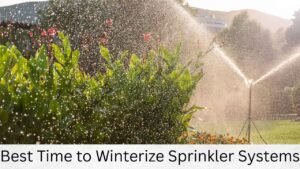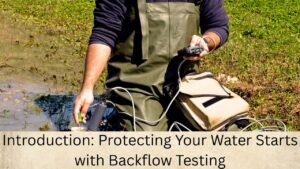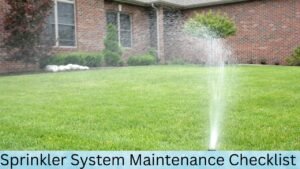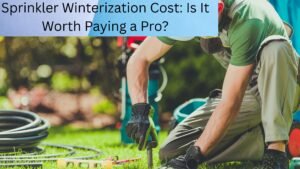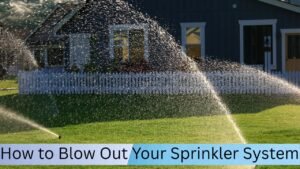Your lawn’s health and your wallet depend on a well-maintained sprinkler system. But unnoticed issues can lead to silent water waste, high utility bills, and a damaged lawn. Could your sprinkler system be underperforming? Let’s explore the signs that could save you money and frustration.
Why You Should Care About Sprinkler Maintenance
I cover essential tips to keep irrigation systems running efficiently year-round. The youtube video below: Maintenance of Your Irrigation System by Water Corporation (YouTube, September 8, 2021) explains routine checks and simple fixes to prevent costly repairs and water waste.
Sprinkler systems are often out of sight and, unfortunately, out of mind. But when they start malfunctioning, they can waste gallons of water, elevate your water bill, and leave you with an unsightly lawn. Small issues, if left unaddressed, can add up quickly. Maintaining a functional sprinkler system not only saves water but also keeps your lawn lush and green, making it an essential part of lawn care.
Let’s break down the most common signs of poor sprinkler maintenance and why you shouldn’t ignore them.

Section 1: Obvious Signs of Sprinkler Issues
1. Broken or Missing Heads
- What’s Happening?: A broken or missing sprinkler head doesn’t just ruin the water flow—it leads to an uneven watering pattern. When heads are broken, some areas get drenched while others get nothing, creating dry patches and wet spots.
- Why It Matters: These irregular spray patterns can waste water, increase your water bill, and prevent healthy lawn growth.
- Homeowner Action: Replace broken heads immediately.
- Why it Matters: This simple action restores water flow, ensuring even coverage across your lawn.
- Visual Cue: A healthy spray pattern should cover a wide area without excessive misting or uneven jets.
2. Clogged or Misaligned Nozzles
- What’s Happening?: Clogged nozzles disrupt the water flow, leading to poor coverage and inconsistent watering. Misaligned nozzles can direct water into areas that don’t need it (like your driveway or sidewalk).
- Why It Matters: A blocked nozzle leads to dry spots on the lawn, while misalignment results in wasteful water runoff and uneven watering.
- Homeowner Action: Clean or replace the nozzle as needed.
- Why it Matters: A clean nozzle ensures uniform water distribution, improving coverage and efficiency.
- Troubleshooting Tip: Use a small brush or toothpick to carefully remove debris from the nozzle opening.
3. Visible Leaks
- What’s Happening?: Leaks in your sprinkler system can lead to a significant amount of wasted water. They might be caused by damaged pipes, faulty fittings, or a broken valve.
- Why It Matters: A minor leak can waste hundreds of gallons of water each month, increasing your water bill significantly.
- Homeowner Action: Inspect pipes and fittings for visible leaks. Replace or repair as necessary.
- Why it Matters: Fixing leaks quickly prevents further damage to the system and reduces water waste.
- Visual Cue: Look for wet spots around the sprinkler heads or puddles in areas not being watered.
Section 2: Subtle Signs of Sprinkler Issues
1. Higher Water Bills
- What’s Happening?: A sudden increase in your water bill could indicate an unseen issue with your sprinkler system, such as a hidden leak or inefficient watering schedule.
- Why It Matters: A minor issue can escalate into a significant cost if left unaddressed. Even small leaks can result in huge water wastage over time.
- Homeowner Action: Review your water usage. Compare bills month to month to spot any unusual spikes.
- Why it Matters: Identifying unexpected increases early lets you troubleshoot or call for repairs before costs get out of hand.
- Troubleshooting Tip: Check for recent changes to your watering schedule that might be causing unnecessary overwatering.
2. Dry Patches and Wilted Grass
- What’s Happening?: Dry spots on your lawn could be due to clogged nozzles, broken heads, or blocked pipes. A healthy lawn should receive consistent water coverage, but these issues create uneven wetness.
- Why It Matters: Dry patches lead to stressed grass and create perfect conditions for weeds and pests. On the other hand, soggy areas can indicate overwatering, leading to root rot and fungal diseases.
- Homeowner Action: Check sprinkler heads to ensure they’re not clogged or misaligned.
- Why it Matters: Proper coverage and water distribution allow your lawn to thrive, preventing patches and weeds.
- Visual Cue: Brown spots in a circular pattern often indicate issues with a specific sprinkler head.
3. Noisy Sprinklers
- What’s Happening?: Strange sounds like hissing, gurgling, or grinding can indicate issues with the system. Hissing might be a leak; gurgling could mean air in the lines; and grinding often points to pump or valve problems.
- Why It Matters: Noisy sprinklers aren’t just an inconvenience—they can signify potential issues that affect water pressure and efficiency.
- Homeowner Action: Listen for unusual sounds when your sprinklers are running. Investigate any hissing or grinding noises immediately.
- Why it Matters: Fixing noise-related problems quickly prevents further damage and ensures your system operates efficiently.
Section 3: The Consequences of Poor Sprinkler Maintenance
Ignoring small issues with your sprinkler system doesn’t just cost you money—it can harm your lawn and even your property value. In some cases, poor performance might not be about maintenance at all—it could be a sign your system is outdated. Learn how long sprinkler systems typically last and when it’s time to replace them. Here’s what happens when you neglect maintenance:
1. Wasted Water and Higher Bills
- What’s Happening?: Ignoring broken heads or leaks can lead to substantial water waste.
- Cost Impact: You could see your water bill increase by up to 30% if these problems are left untreated.
2. Lawn Damage and Pest Infestation
- What’s Happening?: Overwatering or underwatering weakens your grass, making it susceptible to fungal diseases like brown patch and dollar spot. This also attracts pests like mosquitoes, slugs, and grubs.
- Cost Impact: A lawn in poor condition can reduce your property’s value by up to 10%.
3. Aesthetic and Property Value Impact
- What’s Happening?: A patchy, unhealthy lawn doesn’t just look bad—it can affect curb appeal and hurt your home’s perceived value.
- Cost Impact: You might lose a percentage of your home’s value if your lawn appears neglected, which could influence a buyer’s decision in the long run.
Section 4: DIY Sprinkler Checks You Can Do
Maintaining your sprinkler system doesn’t have to be complicated. Here’s what you can check yourself:
1. Visual Inspection
- What to Look For: Examine your sprinkler heads for cracks, blockages, or misalignments. Check exposed pipes for leaks or damage.
- Tools You’ll Need: A screwdriver, flashlight, and basic tools for tightening connections.
2. Check Water Pressure
- What to Look For: Water pressure should be between 30-50 psi. Too high or too low means your system isn’t functioning at its best.
3. Clean Nozzles
- What to Look For: Reduced water pressure or clogs can be signs of dirty or worn-out filters.
- Tools You’ll Need: Screwdriver or wrench, and replacement filter.
4. Adjust Sprinkler Heads
- What to Look For: Ensure each sprinkler head provides adequate coverage without overlap or dry spots.
- Tools You’ll Need: A wrench or hand tool to adjust head position.
5. Seasonal Adjustments
- What to Look For: Adjust watering times based on the season. During hot summer months, you may need to water more deeply, while winter months call for less frequent watering.
Section 5: When to Call a Professional
Some sprinkler issues are too complex or dangerous to fix on your own. Here’s when to call in an expert:
1. Major Leaks or Pipe Issues
- Signs: Constantly wet areas, significant drops in water pressure, or puddles that don’t disappear.
- Urgency: Call a professional immediately to prevent further damage.
2. System Design Problems
- Signs: Dry spots on your lawn despite functioning heads, indicating a poor layout or insufficient water coverage.
3. Electrical Issues
- Signs: Problems with timers, control panels, or automatic systems.
4. Backflow Prevention
- Signs: If you’re unsure about your system’s backflow prevention, it’s best to have a pro test and maintain it.
Conclusion: Take Action Now to Protect Your Lawn and Wallet
Ignoring sprinkler maintenance can lead to major issues. From wasting water to harming your lawn’s health, the costs of poor maintenance add up quickly. Take charge today: inspect your system, make minor fixes, and consider a professional audit if you’re unsure. Even something as simple as knowing when to replace sprinkler filters and how can make a big difference. Don’t let your sprinkler system silently drain your wallet—keep your lawn lush and your water bill under control!
